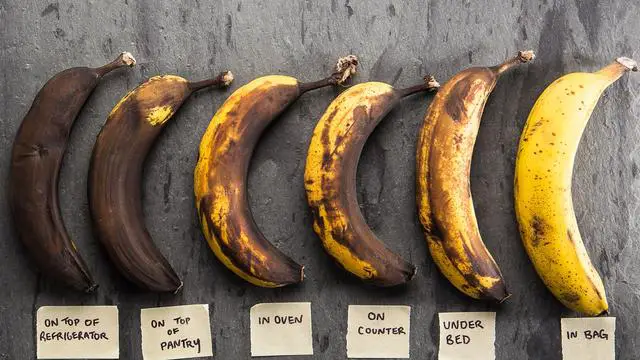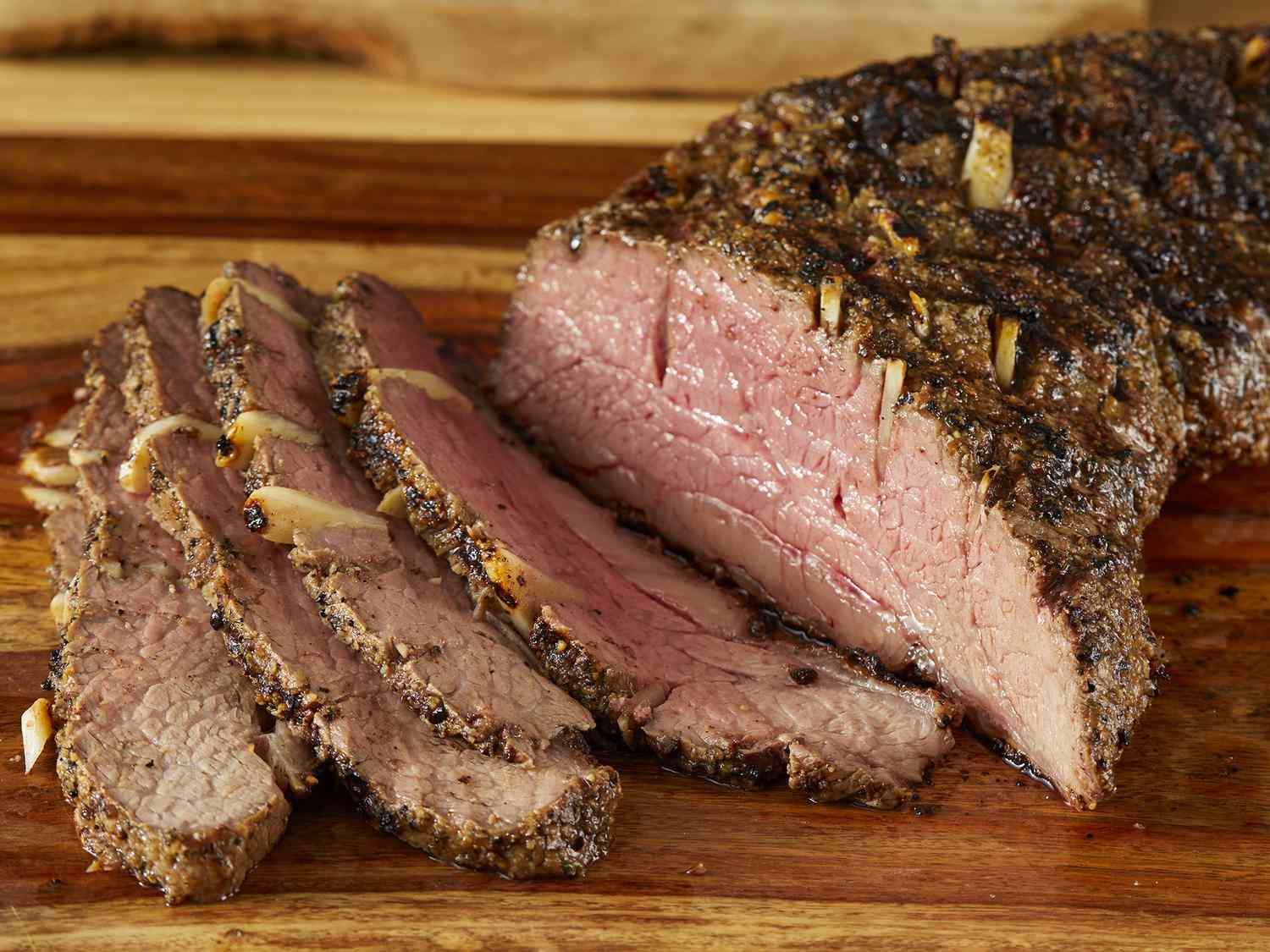
“When Do Bananas Go Bad? A Comprehensive Guide to Determining Banana Freshness”
How Long Do Bananas Last? Extending Shelf-Life & More
Bananas have a relatively short shelf life due to their quick ripening process. When purchased semi-unripe, they can last about a week on the counter before turning brown. If you buy green bananas, they will slowly ripen over a week’s time instead of quickly going bad. Once fully yellow and no longer stiff, ripe bananas will last for three days at room temperature.

To extend the shelf life of bananas, it is recommended to store them in the refrigerator once they have ripened sufficiently. Unripe bananas should be allowed to ripen at room temperature before being transferred to the fridge. In the refrigerator, bananas can stay fresh and at peak ripeness for seven to ten days. After peeling or cutting a banana, it can last for three days in the fridge if wrapped up to slow down oxidation.
The best trick for extending the life of a banana is freezing it. Frozen bananas can last for up to six months without changing their texture or flavor. This is an excellent option for avoiding waste and having ready-to-use bananas on hand, especially for making smoothies or homemade ice cream.
How Long Are Bananas Fresh at Room Temperature?
At room temperature, bananas can last for about a week if they are semi-unripe. This means they are slightly green and stiff, not yet fully yellow and ripe. If you buy a bunch of green bananas, they will ripen over the course of a week rather than going bad quickly. Just ripe bananas that have turned fully yellow will last for three days at room temperature before turning brown.
However, it’s important to note that the rate at which bananas ripen can vary depending on when they were purchased and the climate you live in. To extend their shelf life beyond a week, it is not recommended to leave them in a fruit bowl on the counter.
One trick to prolonging the life of bananas is to store them in the refrigerator once they have sufficiently ripened. Unripe bananas should be allowed to ripen at room temperature before being transferred to the fridge. Bananas can stay fresh and at peak ripeness in the refrigerator for seven to ten days. Once peeled or cut, bananas can last for three days in the fridge if properly wrapped up.
The best way to extend the life of a banana is to freeze it. Frozen bananas can last for up to six months without changing their texture or flavor. This is especially useful if you use bananas frequently, such as for making smoothies or baking.
When Do Bananas Go Bad in the Fridge?

When stored in the fridge, bananas can last for up to seven to ten days before they start to go bad. This is because the cool temperature slows down the ripening process and helps to preserve their freshness. However, it’s important to note that the texture and flavor of bananas may change slightly when refrigerated, so it’s best to consume them as soon as possible for optimal taste.
To extend the shelf life of bananas in the fridge, it is recommended to keep them unpeeled until you are ready to eat or use them. If you have already peeled or cut a banana, make sure to wrap it tightly in plastic wrap or place it in an airtight container before refrigerating. This will help prevent oxidation and browning.
It’s also worth mentioning that freezing bananas is an excellent way to prolong their shelf life even further. Frozen bananas can last for up to six months and can be used in a variety of recipes like smoothies, ice cream, and baked goods. Just remember to peel them before freezing and store them in a freezer-safe bag or container.
Can I Put Bananas in the Freezer?

Yes, you can put bananas in the freezer. In fact, freezing bananas is a great way to extend their shelf life and prevent them from going to waste. When bananas are frozen, they can last for up to six months without losing their texture or flavor. To freeze bananas, simply place them in the freezer unpeeled. You can either freeze them whole or slice them into smaller pieces for easier use later on.
Freezing bananas is especially useful if you have a surplus of ripe or overripe bananas that you won’t be able to consume before they go bad. Frozen bananas are perfect for making smoothies, banana bread, muffins, or even homemade ice cream. They add a creamy texture and natural sweetness to these recipes.
When is a Banana Bad?

When is a Banana Bad?
A banana is considered bad when it is covered in brown spots and is no longer bright yellow. It may also turn completely brown and become mushy. Mold growing on the skin or a pungent odor are additional signs that a banana has gone bad. If you’re uncertain, you can unpeel the banana to check if the flesh is brown and mushy. Liquid pooling underneath the banana is another indication that it has spoiled. When any of these signs are present, it’s time to throw out the banana as it can no longer be used.
However, overripe bananas can still be put to good use in baking. They mash easily and add a nice caramel flavor to recipes like banana bread and banana nut muffins. It’s important to note that only overripe bananas should be used for baking, not ones that have gone past that point. Any visible mold, slimy liquid, or sour smell means the banana is no longer safe to eat.
How to Extend the Shelf Life of Bananas

Bananas have a short shelf life due to their propensity to ripen and go bad quickly. However, there are several ways to extend their shelf life and prevent them from going bad too soon.
One method is to purchase semi-unripe bananas at the store. These bananas are slightly green and stiff, not yet fully ripe. By buying semi-unripe bananas, you can allow them to sit on the counter for about a week before they start turning brown.
If you have bought green bananas, they will slowly ripen over the course of a week, rather than going bad quickly. This is why most bunches of bananas are sold in varying stages of ripeness.
To further extend the shelf life of bananas, it is recommended to store them in the refrigerator once they have sufficiently ripened. Once the bananas have turned fully yellow and started to soften, transfer them to the fridge. Bananas can stay fresh and at peak ripeness in the refrigerator for seven to ten days.
If you want your bananas to last even longer, you can freeze them. Frozen bananas can last for up to six months without changing their texture or flavor. Simply pop unpeeled bananas into the freezer and use them whenever needed.
By following these storage methods, you can significantly prolong the shelf life of your bananas and reduce waste.
How to Use Over Ripe Bananas

When you have overripe bananas that are no longer suitable for eating, there are several delicious ways to use them. One popular option is to make banana bread or banana nut muffins. The soft and mushy texture of the overripe fruit adds a caramel flavor and moistness to these baked goods.
Another option is to freeze the overripe bananas and use them later in smoothies or homemade ice cream. Frozen bananas can be blended with other fruits and liquids to create a creamy and refreshing treat.
If you’re feeling adventurous, you can also use overripe bananas in savory dishes. They can be mashed and added to pancake or waffle batter for extra sweetness and moisture. Overripe bananas can even be used as a natural sweetener in sauces or dressings.
Final Thoughts: How Long Do Bananas Last

Bananas have a relatively short shelf life, but there are ways to extend it and avoid wasting them. If you buy semi-unripe bananas, they can sit on the counter for about a week before turning brown. Green bananas will ripen slowly over a week’s time. Just ripe bananas will last for three days at room temperature.
To make your bananas last longer, store them in the refrigerator once they have ripened. They can stay fresh and at peak ripeness in the fridge for seven to ten days. Once peeled or cut, wrap the banana back up in its peel and refrigerate for up to three days.
If you want to save your bananas for an even longer period, freezing is the best option. Frozen bananas can last up to six months without changing their texture or flavor. This is especially useful if you use bananas frequently in smoothies or baking.
Overripe bananas that are no longer suitable for eating can be used in baking recipes like banana bread or muffins. However, if you notice mold, slimy liquid, or a sour smell, it’s time to throw them out as they are no longer safe to eat.
By properly storing your bananas and utilizing different methods of preservation, you can ensure that your bananas last longer and reduce waste.
In conclusion, bananas typically go bad when they become overripe, showing signs of brown spots and a mushy texture. Proper storage, such as keeping them in a cool place and separating them from other fruits, can help prolong their freshness. It’s important to consume bananas before they reach this stage to enjoy their optimal taste and nutritional value.
Learn More About Grilling
If you want to learn more about grilling, check out these other helpful resources!











